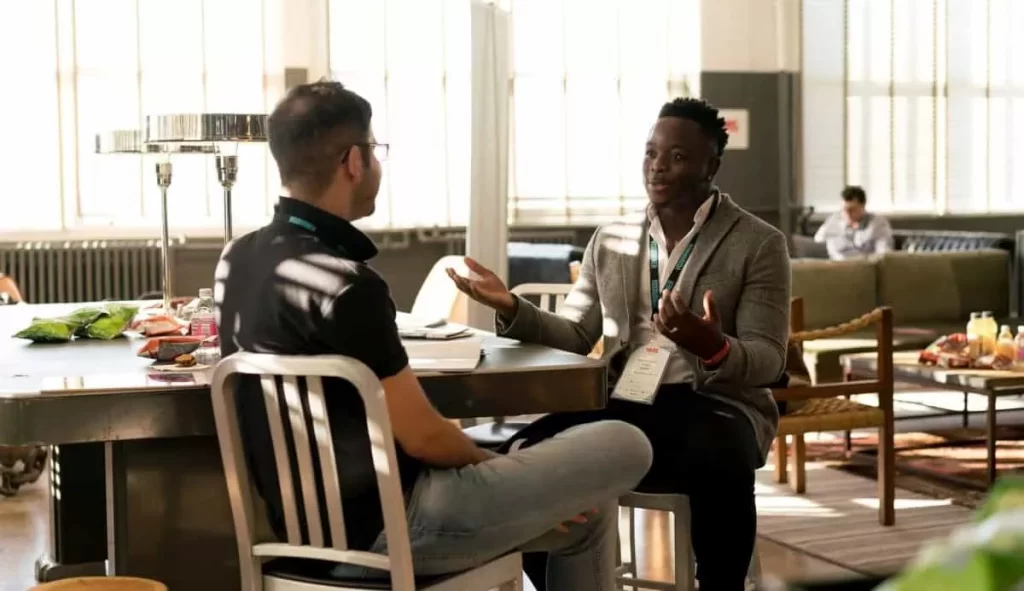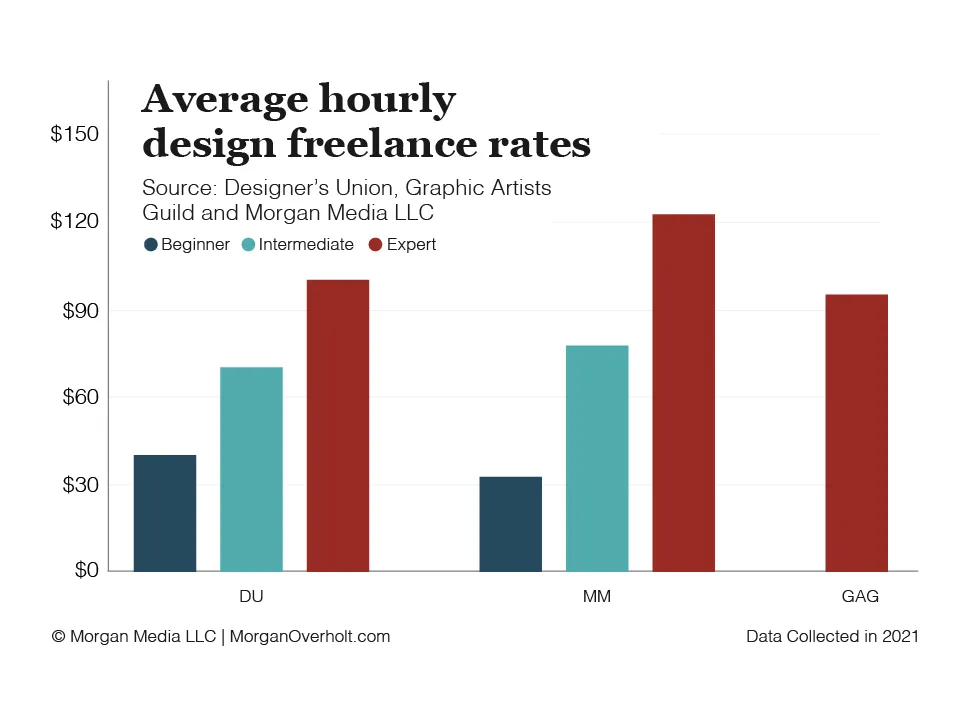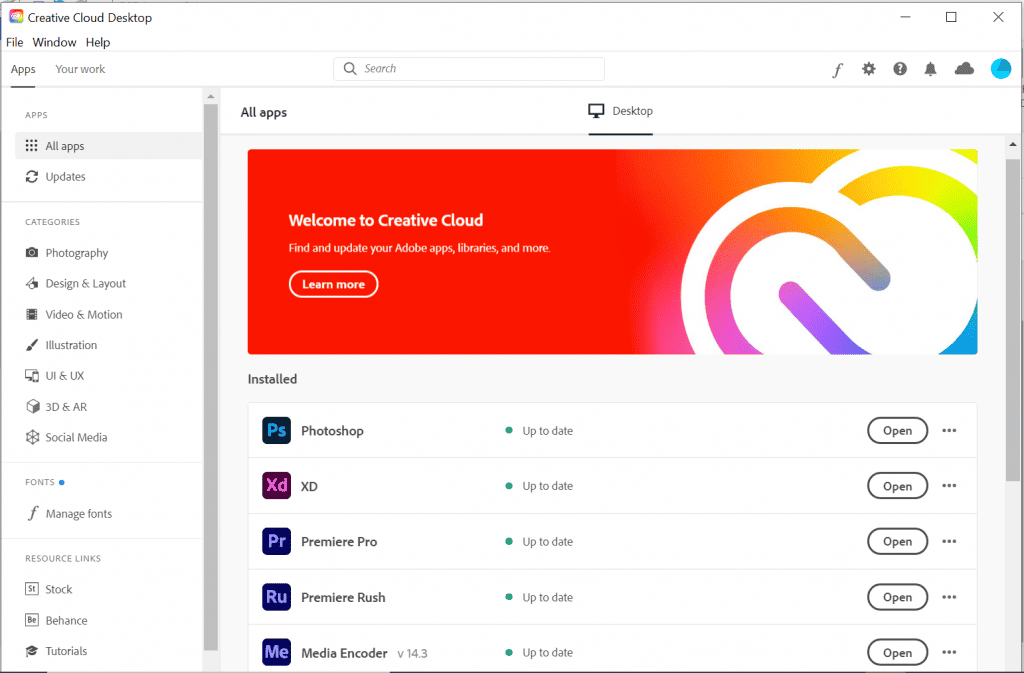Freelance Graphic Design: An Introduction
Working independently as a graphic designer, offering design services to customers on a by-project basis is known as freelance graphic design. Freelance graphic designers have become more in demand in recent years due to the growing gig economy and technological advances.
This increase can be attributed to the flexibility and cost-effectiveness that freelancers offer businesses of all sizes. Advertising, marketing, web design and branding are some sectors where freelance graphic designers play an important role by bringing their creative talents and expertise to bear for businesses wishing effectively to communicate messages.
For example, let's say there's a start-up business requiring someone to create a logo for them; they could engage the services of a freelancer who specialises in this particular field – otherwise known as logo design – so they can come up with something unique and visually appealing which represents what they want their brand identity to convey. By working closely with clients at every stage, freelancers ensure that final designs align seamlessly with company values or target markets/stakeholders.
Table of Contents
What is Freelance Graphic Design?

Working independently and outside the confines of a traditional job, freelance graphic designers provide services to clients. They are not bound to a particular company like an in-house graphic designer, so that they can choose their schedule, projects and clients. Freelance graphic designers aren't tied down to one employer and can handle multiple assignments simultaneously.
For instance, on any given day, a freelance graphic designer might work on designing a website for a small business in the morning. They may create social media graphics for a marketing agency in the afternoon. And at night? Maybe collaborating with a publishing company on designs for book covers. The variety allows freelancers to expand their skills into different realms of creation.
Pros and Cons of Freelance Graphic Design
There are several advantages and disadvantages to freelance graphic design that you need to think about before deciding if this is the right career path for you.
Advantages:
Flexibility: One of the most significant upsides to being a freelance graphic designer is the control it gives you over your working hours. You can choose exactly what projects you want and when and where to work on them. This could be from home while travelling or anywhere else that suits you.
Higher earning potential: Depending on how experienced or in-demand your skills are, freelance graphic designers can earn much more than those who do not work for themselves. You will have complete control over your rates and how many clients/projects can be handled at anytime.
Wide range of clients: Another advantage is that freelancers often get exposure to different types of projects across many industries, which enables them to gain experience with other sectors they may otherwise have not had such close contact with.
Skillset development: When working within an agency, there tend to be experts in each field, but when freelancing, there is often only yourself, so this means getting involved in all areas, which helps improve your overall skillset whilst also learning new techniques/styles etc. from other people doing similar roles elsewhere.
Disadvantages:
Irregular income: As mentioned above, being self-employed means that sometimes business can be quiet, resulting in periods where cash flow is less than expected. Therefore, any freelancer must have financial plans/contingency options if things don't go according to plan initially.
Client acquisition: As a beginner or someone looking into going freelance, you will soon learn that finding and securing clients can be challenging! This area requires good marketing skills as well as presenting robust portfolio case studies to attract prospective customers. Also, building network connections and becoming a trusted supplier takes considerable time and effort.
Self-management: It is the responsibility of a freelance designer to handle all aspects of their business, including marketing, client communication, taxes and other administrative tasks. Freelancers must be highly organised to manage projects, meet deadlines, and ensure client satisfaction. They must also cover their insurance if any issues affect their professional reputation.
Despite the challenges, freelancing graphic design can be a fulfilling career choice for those who enjoy working independently and have plenty of motivation.
Starting a Freelance Graphic Design Business

Starting a freelance graphic design business necessitates careful thought and planning. The following are some stages to assist you in getting started:
Ascertain Your Speciality: Determine your area of expertise within graphic design. To differentiate yourself in the market and appeal to clients looking for specialist services, concentrate on one specific niche, such as web design, branding, or print design.
Register Your Business: Choose a name for your company and register it with the appropriate authorities. Depending on where you live, you might also need to obtain any necessary licences or permits to operate lawfully.
Set Up a Workspace: Establish an area dedicated solely to work conducive to creativity and productivity. Ensure you have all the necessary equipment and software for practical design work.
Formulate a Business Plan: Develop an extensive business plan that covers your goals, target market, pricing structure, marketing strategies, and financial outlooks. A precise business plan will be a blueprint for your freelance graphic design company's future.
Create Professional Contacts: Networking is crucial for freelancers because networking can help them expand their collaboration and referral possibilities. Attend industry events, join online designer communities and connect with professionals in related fields so you can establish connections—and gain visibility while doing so.
For example's sake, let's say your specialisation becomes logo design; what this means is that within different industries, there'll be businesses needing unique logos created just for them – i.e., by narrowing down which aspect of graphic designing you specialise in (in this case it would be creating unique/memorable logos) allows potential customers requiring such skills locate specifically someone like yourself who has positioned themselves as ‘the' logo guru!
Tips for Success as a Freelance Graphic Designer
To be a successful freelance graphic designer, consider the following suggestions:
- Keep Learning: Graphic design constantly changes – new trends and tools always appear. Use online courses, workshops, and conferences to sharpen your skills. This will help you stay ahead of your competition and develop fresh solutions for your clients.
- Manage Your Time Well: Good time management is critical when freelancing. Develop time-management skills to deliver projects on deadline while still having a life. Use productivity techniques or tools like Pomodoro to help you manage tasks effectively.
- Talk to Clients Regularly: Good communication helps build long-lasting relationships with clients who will want to hire you repeatedly—and maybe even recommend you to their peers! Make a point of communicating clearly and regularly with clients so that misunderstandings don't creep up on you as deadlines loom.
- Get Yourself Online: These days, it's essential for freelance graphic designers to have an online presence – preferably one that's pretty solid! Start by creating a professional-looking website where people can see examples of your work, find out what services you offer and how much they cost, read testimonials from happy clients…and contact you!
- Socialise (Online): Social media isn't just for looking at pictures of cats—it's also great for letting potential customers know about your fantastic design talents! Share snapshots from interesting projects on Instagram; create “process” boards on Pinterest; start conversations on Twitter—there are plenty of ways to get noticed (in a good way)!
- A Little Bit Extra Goes Far: If someone hires, recommends, or influences people in any way, there's nothing quite like delivering high-quality work and friendly service. Going above and beyond what they expect you to do equals someone who gets asked back lots and recommended lots. Get the idea?
Also, say you've just done an excellent job branding a café in your town, and they're pleased with your creative ideas and your conscientiousness about everything. If they're willing to put that into writing? That's a testimonial, like, “We liked working with Chris because she made our brand look brilliant!” You should put it on your website (if you have one) and share it on social media so other potential clients are like, “Yes! I want my brand to look brilliant too!”
It's not bragging IF SOMEONE ELSE SAYS IT ABOUT YOU!
Finding Freelance Graphic Design Jobs

Being new to the freelance graphic design market, it isn't easy to spot opportunities. Nonetheless, numerous strategies can be deployed to discover fresh projects:
Freelance Job Platforms: Use frequently used freelancing platforms such as Upwork, Freelancer, and Fiverr. These platforms let you create a profile, display your portfolio and bid on suitable projects.
Networking: Networking is an effective method for identifying new positions in freelance graphic design. Attend industry events, join online design communities and connect with professionals in similar sectors. You will gain access to potential job opportunities via referrals or collaborations by forging relationships with fellow designers, marketers and entrepreneurs.
Referrals: Encourage satisfied clients to send more work by referring you to their contacts. Word-of-mouth recommendations offer a valuable source of new business leads. Going above and beyond by delivering outstanding service and top-quality work will boost the chances of receiving referrals.
To illustrate how networking works in practice, imagine you have joined a popular design community on social media where members regularly comment on each other's work or participate in lively discussions.
One day, another designer notices your skills and recommends you when one of his clients needs a graphic designer for an upcoming project.
This referral immediately creates a brand-new freelance job opportunity for you!
Building a Strong Graphic Design Portfolio
A commanding graphic design portfolio is crucial to display your talents and attract potential clients. These tips can help you create just that.
Pick Your Best Work: Select the most incredible range of standout design projects to highlight your skills and expertise. Diverse formats and styles will emphasise versatility.
Get Organised: Create a visually pleasing, user-friendly portfolio. Briefly describe each project's aims and results. Case studies, which offer detailed insights into your creative process, are worth considering.
Make It Personal: Tailor what you present to suit specific employers or clients – creating separate versions for different industries or specialisms might be necessary.
Go Beyond Design: Integrate satisfied client testimonials as an easy way to add credibility – they'll also humanise the content.
For example:
Let's say you've rebranded a tech start-up – producing a new logo, website design and marketing collateral. You might include concepts, final techniques and highlights from the subsequent campaign to demonstrate your complete skillset effectively.
Setting Freelance Graphic Design Rates

As a freelance graphic designer, setting the correct rates for your services is essential. Doing so is crucial to your financial success and how clients perceive your value as a designer. When figuring out what you should charge, keep in mind these key factors:
Do Your Research: Conduct market research to see what other freelancers with similar experience and skills charge for their services. This will help you set competitive rates that reflect the value you bring to your clients.
Factor In Expenses: Consider overhead costs and time investment when deciding how much to charge. Also, think about how much income you'd like to make from freelancing, which will be helpful when making pricing decisions.
Value-Based Pricing: Determine your fees based on the value of what you're offering, considering factors such as the complexity of the project, expertise and client budget. Using design solutions (yours!) could positively impact the client's business or brand; this can help justify higher prices.
For example, say you have extensive experience creating custom illustrations for children's books – because this skill is quite specialised compared with being able to develop basic logos (for example) – it would likely mean setting relatively high prices for such work.
Freelance Graphic Design Contracts and Agreements
If you want to protect yourself and your clients, drafting comprehensive contracts and agreements is crucial. These are the key things to consider when drafting freelance graphic design contracts:
Scope of Work: Clearly explain what work needs doing, what the deliverables will be, and how long everything should take; this helps prevent misunderstandings and “scope creep”. List the specific design services that will be provided – for example, logo design or website branding.
Payment Terms: Set out exactly how much you'll get paid, when you expect payment (and whether you require an upfront deposit), and how clients can pay (cheque? or PayPal?).
Intellectual Property Rights: Determine who has rights over your work once they've paid for it. For instance, many designers say they own their work until it's fully paid up but then transfer ownership rights over the final design so their client can use it completely. However, even if a client owns something outright, it doesn't mean you can't show examples of that piece in your portfolio.
Confidentiality/Non-Disclosure: If any sensitive information is tied up in a project – e.g., trade secrets or confidential business plans – make sure both sides agree in writing not to disclose that stuff elsewhere.
Dispute Resolution: You could avoid going to court by specifying specific ways disputes must be sorted out, such as mediation or arbitration.
Here's an example of why getting these things on paper makes sense:
Let's say you're working with a start-up on branding material, including a new logo. In your agreement with them, clearly state that once they've coughed up funds in total – before delivery – ownership passes from agency/designer X to client Y. However! Include wording stating (… don't just assume) this won't stop designer X from displaying the finished item(s) “in perpetuity” as part of its portfolio/self-promotion mechanism.
Essential Tools for Freelance Graphic Designers

Being a freelance graphic designer, having the right tools can significantly boost your productivity and efficiency. Here are some essential tools for freelance graphic designers:
Design Software: Get to know industry-standard graphic design software such as Adobe Creative Cloud, which includes popular applications like Photoshop, Illustrator, and InDesign. These tools provide robust capabilities to create and edit various design projects.
Online Portfolio Platforms: Use platforms like Behance, Dribbble or Squarespace to build and showcase your online portfolio. These platforms offer customisable templates and features that allow you to present your work professionally with visual appeal.
Time Tracking and Invoicing Tools: Use tools like Toggl, Harvest or QuickBooks to track your time spent on projects and create professional client invoices. These tools help you keep track of billable hours, send invoices and manage finances more efficiently.
Project Management Software: Stay organised and manage projects effectively with tools like Asana, Trello or Basecamp. These platforms let you create project boards, set deadlines, assign tasks and collaborate with clients/team members.
Continuous Learning Resources: Take advantage of online learning platforms such as Skillshare, Udemy or Linkedin to improve skills/expertise continually over time. Such platforms have various courses/tutorials on various design topics.
Here's an example scenario where these essential tools can come in handy – You're working on a web design project for a client. You use Adobe Photoshop for creating website mockups while using Adobe Illustrator to craft custom icons/illustrations. When managing the project efficiently, you utilise Project management software (say Asana) for setting tasks, tracking progress, and maintaining good communication with the client. By leveraging these essential resources/tools, you can not only deliver high-quality work but also streamline workflow at the same time!
Conclusion
For creative professionals, freelance graphic design presents many opportunities to establish a successful career. Freelance graphic designers can prosper in this field thanks to flexible hours, higher earning potential and a diverse pool of clients. Nevertheless, irregular income and client acquisition's drawbacks must be addressed. By adopting best practices, honing their skills and using the right tools, freelancers can overcome these challenges on their way to achieving personal goals. Fully embrace the potentials that come with freelance graphic design as you build a fulfilling and lucrative future in the sector.
